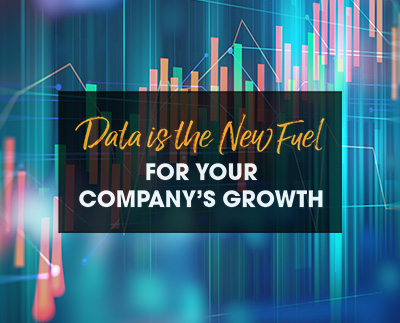
Data-rich and information poor is a widespread state of modern woodworking companies. Today manufacturers have an abundance of data at their fingertips due to an increasing number of software programs, reading devices and sophisticated CNC equipment available to them. Data plays a similar role like fossil fuel did in the last century as the fundamental building block driving any aspect of all our industries.
Data on its own is neutral and holds no value. When transposed into actionable information serving a business goal, it turns into one of the most important assets in a company. It then becomes the single most effective competitive differentiator in a world where everyone has basically the same equipment, uses similar raw materials and employs a comparable workforce.
In a time of constant change and high volatility, the ability to make sense of data flowing through an enterprise and harness it to support its resiliency is of great value.
How do you turn raw data into meaningful and actionable information when lost on a steadily rising data ocean? It all begins with asking the right questions to get to meaningful answers.
Data has to be monitored strictly through the lens of supporting a particular business outcome, which is related to the "why" of your company and the reason for its existence. Such data turned into actionable information will drive business decisions from executive to shop floor level. As goals change, so will the interpretation of identical data. This answers “what” to do when certain conditions exist.
Processes are predefined repeatable steps that serve a particular business outcome and define “how” to execute what was decided based on the available information.
Data, information, decisions and processes are the building blocks driving the success of your company. The better these are understood and defined, the more your company can be automated.
Your team's role in this new world is to be architects and innovators in terms of creating value-added information with the available data. This goes hand in hand with the pending shift from the skilled labor force that is aging out to a new tech-savvy generation taking over the helm in the year 2025. This is when the digital natives will outnumber the digital immigrants. The tribal knowledge of a loyal workforce that uplifted and carried so many of our wood companies during often difficult times in the last 30 years will make space for multitaskers who grew up in the new gig economy.
Software will be of pivotable importance as the information highway connecting everything from winning to fulfilling an order. It will distribute actionable information, easy to consume for the right audience at the right time. Interoperability and flexibility will be more important than siloed point solutions and irreplaceable hero workers dominating the shop floor.
Machines will execute tasks and communicate with operators - and interface directly with business software, providing a steady data flow that can be harvested and turned into valuable information.
Today we are all in the data business and just happen to produce wood products as well.
Is your manufacturing business ready for digital transformation? Take a look at 2020’s software solutions for the woodworking industry.
Share this Post




